Abstract
A behavioral procedure for controlling hyperactivity without inhibiting academic performance is described. Using a time-sample observational method, the hyperactivity displayed by three school children was recorded during math and reading classes. Concurrently, math and reading performances were measured. The study consisted of two baselines, one while the children were on medication and the second while they were off medication. A multiple-baseline design across the two academic subject matters was used to assess the behavioral intervention, which consisted of token reinforcement for correct academic responses in math and subsequently math and reading. Discontinuation of medication resulted in a gross increase in hyperactivity from 20% to about 80%, and a slight increase in math and reading performance. Introduction of a behavioral program for academic performance, during no medication, controlled the children's hyperactivity at a level comparable to that when they were on drugs (about 20%). At the same time, math and reading performance for the group jumped from about 12% during baseline to a level of over 85% correct. Each child performed behaviorally and academically in an optimal manner without medication. Contingency management techniques provided a feasible alternative to medication for controlling hyperactivity in the classroom while enabling the children to grow academically.
Full text
PDF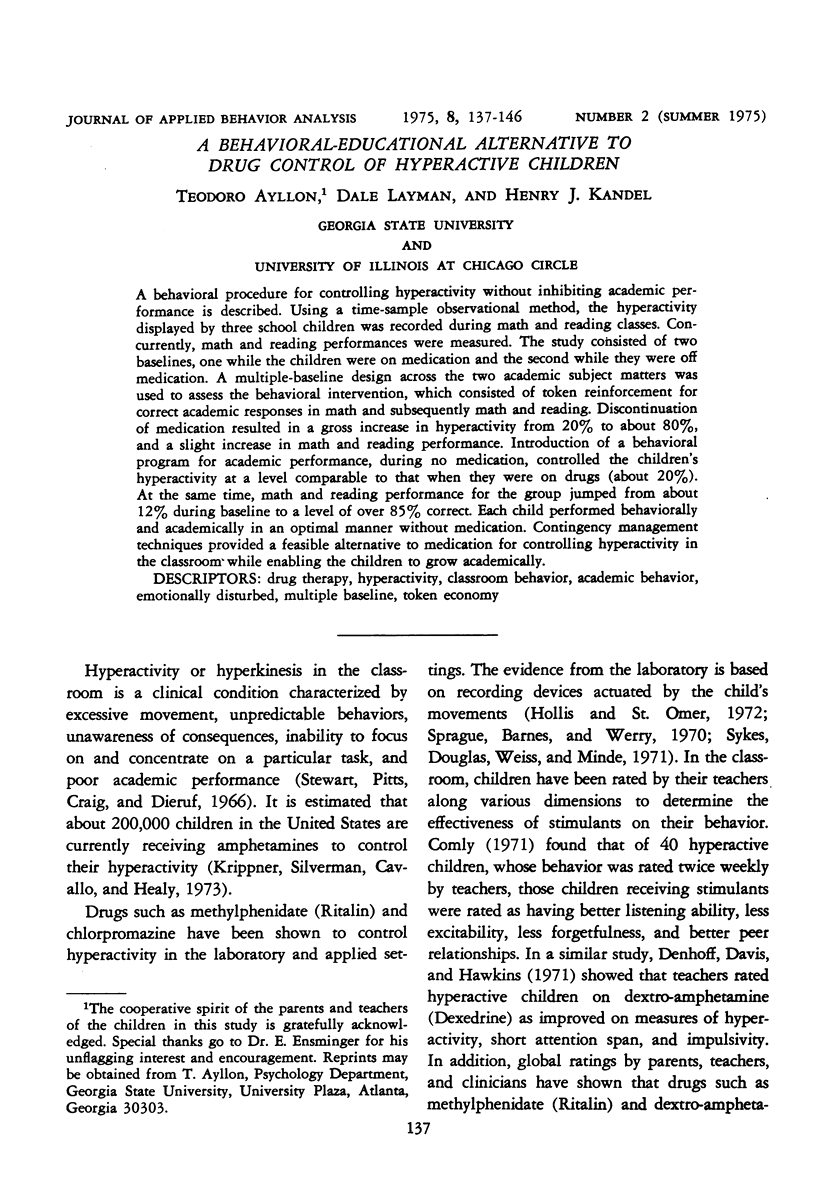

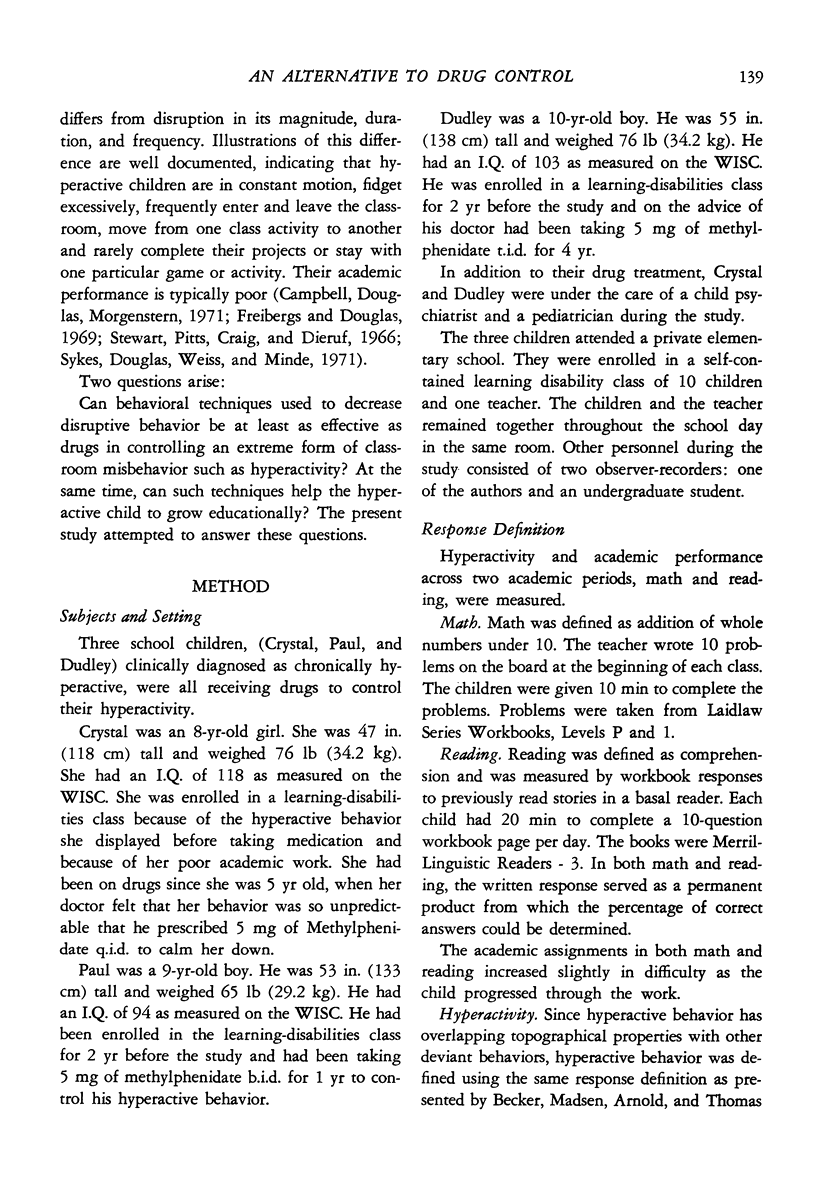

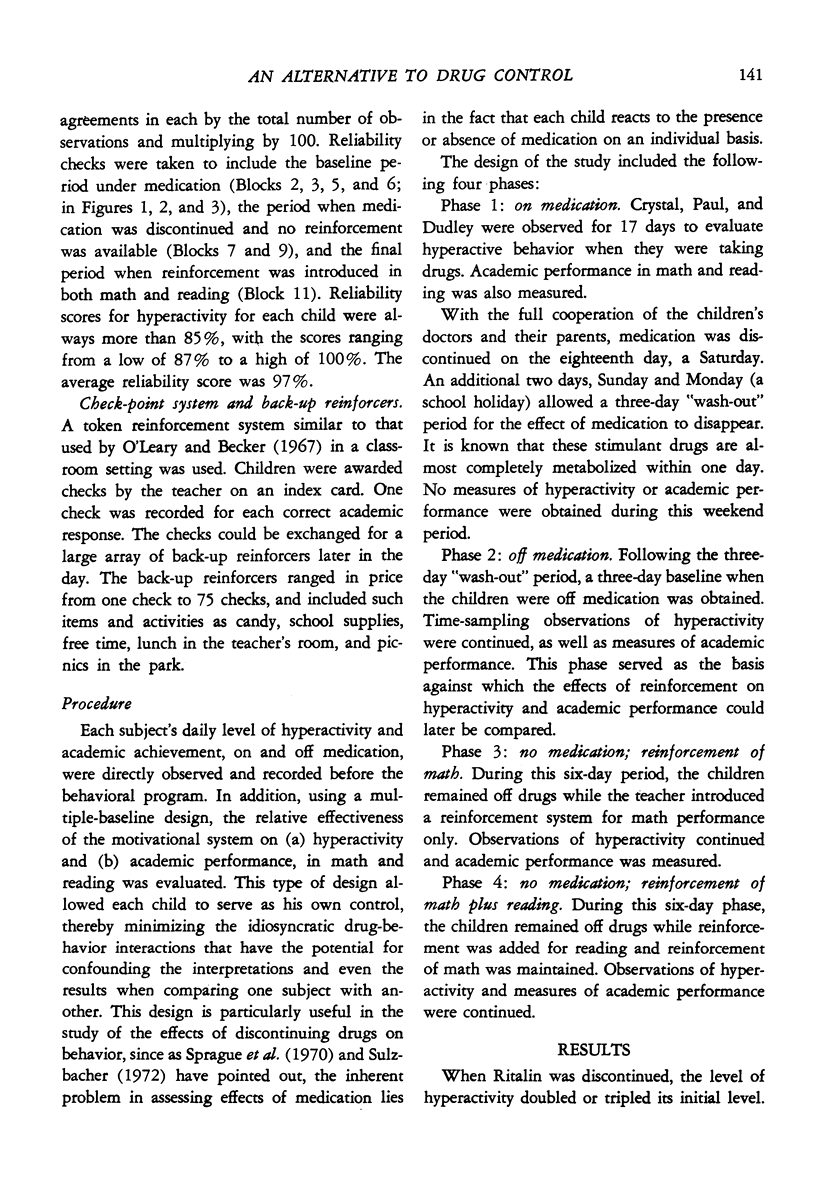

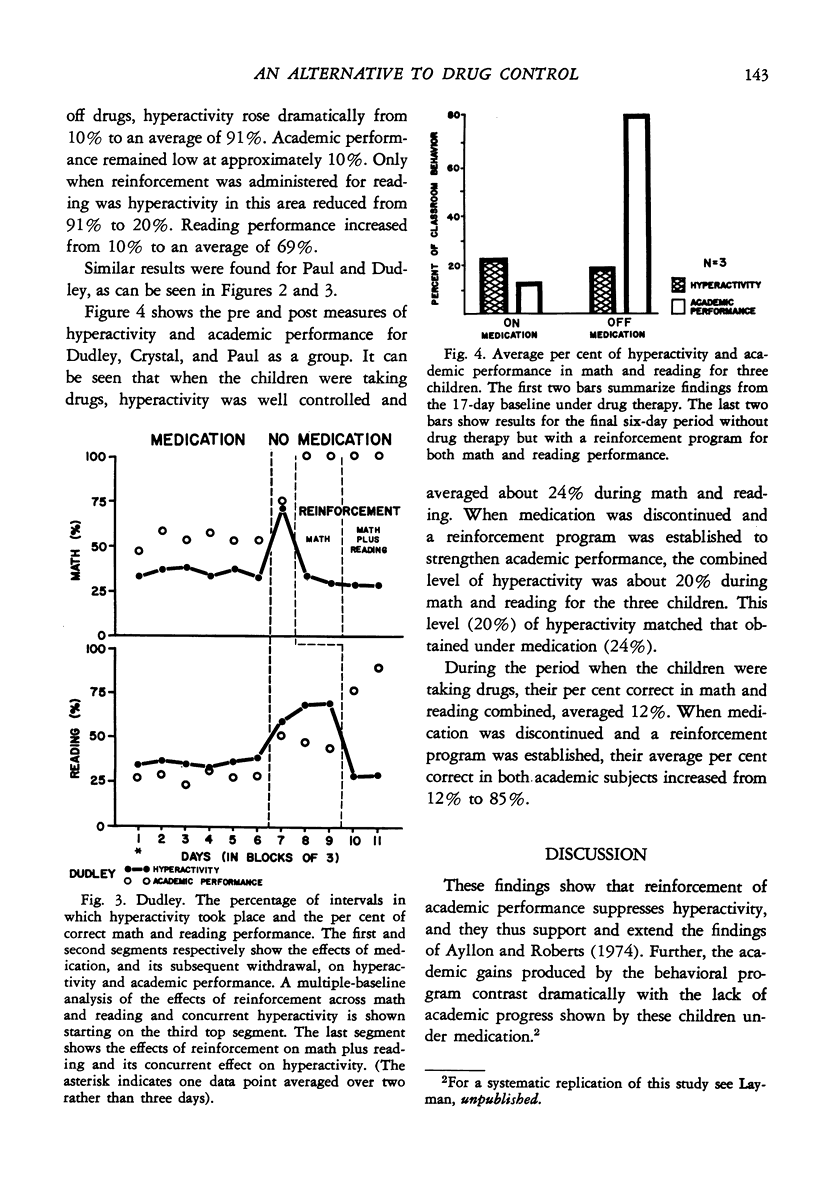


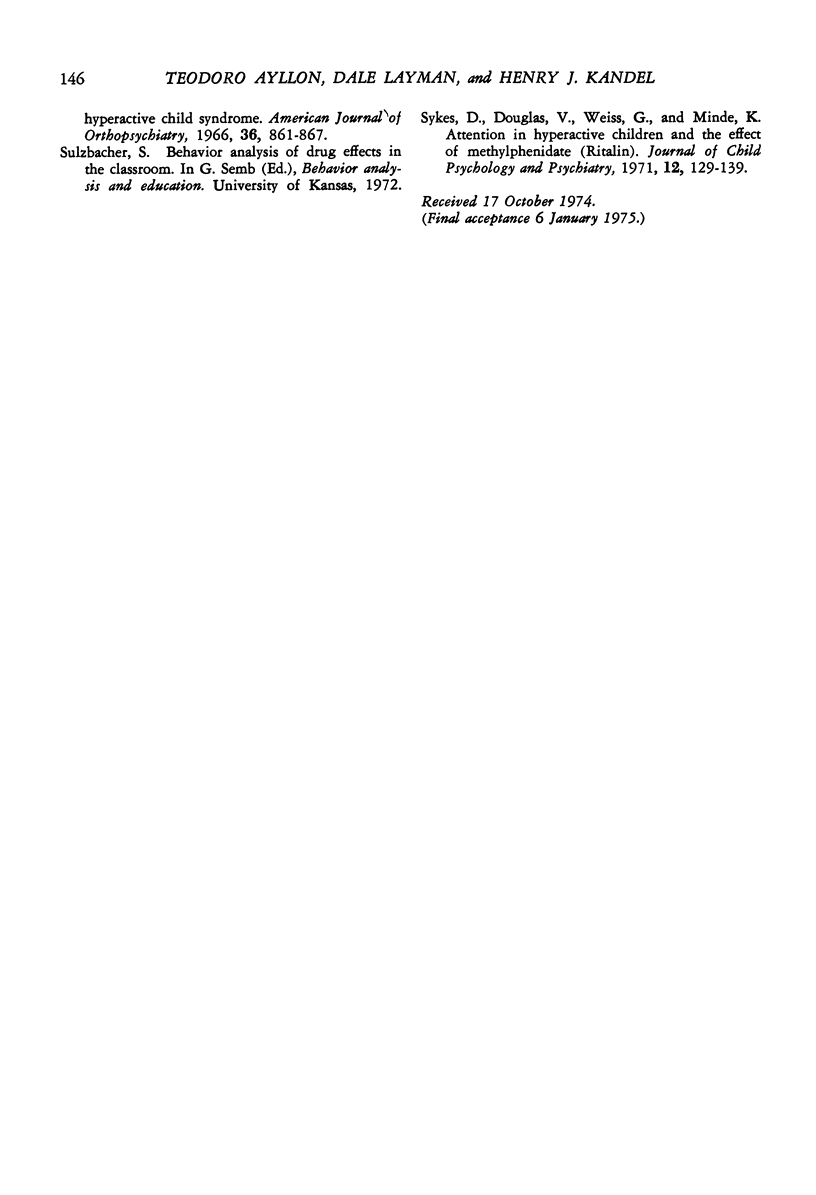
Selected References
These references are in PubMed. This may not be the complete list of references from this article.
- Ayllon T., Kelly K. Effects of reinforcement on standardized test performance. J Appl Behav Anal. 1972 Winter;5(4):477–484. doi: 10.1901/jaba.1972.5-477. [DOI] [PMC free article] [PubMed] [Google Scholar]
- Ayllon T., Roberts M. D. Eliminating discipline problems by strengthening academic performance. J Appl Behav Anal. 1974 Spring;7(1):71–76. doi: 10.1901/jaba.1974.7-71. [DOI] [PMC free article] [PubMed] [Google Scholar]
- CONNERS C. K., EISENBERG L., SHARPE L. EFFECTS OF METHYLPHENIDATE (RITALIN) ON PAIRED-ASSOCIATE LEARNING AND PORTEUS MAZE PERFORMANCE IN EMOTIONALLY DISTURBED CHILDREN. J Consult Psychol. 1964 Feb;28:14–22. doi: 10.1037/h0049224. [DOI] [PubMed] [Google Scholar]
- Conners C. K., Eisenberg L., Barcai A. Effect of dextroamphetamine on children. Studies on subjects with learning disabilities and school behavior problems. Arch Gen Psychiatry. 1967 Oct;17(4):478–485. doi: 10.1001/archpsyc.1967.01730280094011. [DOI] [PubMed] [Google Scholar]
- Epstein L. C., Lasagna L., Connors C. K., Rodriguez A. Correlation of dextroamphetamine excretion and drug response in hyperkinetic children. J Nerv Ment Dis. 1968 Feb;146(2):136–146. doi: 10.1097/00005053-196802000-00005. [DOI] [PubMed] [Google Scholar]
- Freibergs V., Douglas V. I. Concept learning in hyperactive and normal children. J Abnorm Psychol. 1969 Jun;74(3):388–395. doi: 10.1037/h0027601. [DOI] [PubMed] [Google Scholar]
- Keogh B. K. Hyperactivity and learning disorders: review and speculation. Except Child. 1971 Oct;38(2):101–109. doi: 10.1177/001440297103800201. [DOI] [PubMed] [Google Scholar]
- O'Leary K. D., Becker W. C. Behavior modification of an adjustment class: a token reinforcement program. Except Child. 1967 May;33(9):637–642. [PubMed] [Google Scholar]
- Sprague R. L., Barnes K. R., Werry J. S. Methylphenidate and thioridazine: learning, reaction time, activity, and classroom behavior in disturbed children. Am J Orthopsychiatry. 1970 Jul;40(4):615–628. doi: 10.1111/j.1939-0025.1970.tb00719.x. [DOI] [PubMed] [Google Scholar]
- Sprague R. L., Toppe L. K. Relationship between activity level and delay of reinforcement in the retarded. J Exp Child Psychol. 1966 Jul;3(4):390–397. doi: 10.1016/0022-0965(66)90082-8. [DOI] [PubMed] [Google Scholar]
- St Omer V. S. Direct measurement of psychopharmacologic response: effects of chlorpromazine on motor behavior of retarded children. Am J Ment Defic. 1972 Jan;76(4):397–407. [PubMed] [Google Scholar]
- Stewart M. A., Pitts F. N., Jr, Craig A. G., Dieruf W. The hyperactive child syndrome. Am J Orthopsychiatry. 1966 Oct;36(5):861–867. doi: 10.1111/j.1939-0025.1966.tb02414.x. [DOI] [PubMed] [Google Scholar]
- Sykes D. H., Douglas V. I., Weiss G., Minde K. K. Attention in hyperactive children and the effect of methylphenidate (ritalin). J Child Psychol Psychiatry. 1971 Aug;12(2):129–139. doi: 10.1111/j.1469-7610.1971.tb01056.x. [DOI] [PubMed] [Google Scholar]


